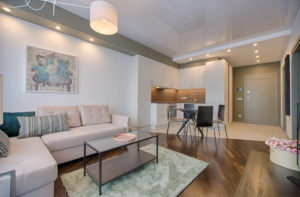
Your home should be your sanctuary, a place of comfort no matter the season. But what happens when your home’s HVAC system starts disrupting that balance? From high humidity to poor airflow, several factors could be undermining the comfort of your living space.
The good news is, these issues are often manageable once you know where to look. Below, we unpack five common HVAC-related factors that may be making your home uncomfortable and give you straightforward solutions to tackle them.
The Importance of Regular Residential HVAC Maintenance
No matter how advanced your HVAC system is, it won’t run efficiently without regular upkeep. Dirt, wear, and tear can cause the system to lose its efficiency over time, which can lead to higher energy bills and a less comfortable home.
Schedule regular maintenance with a professional residential hvac technician. Routine checkups can identify small issues before they turn into major problems. Maintenance should typically include cleaning the system, checking for any needed repairs, and ensuring all components are functioning as they should.
Getting Humidity Levels under Control
Too much or too little humidity can wreak havoc on your comfort. High humidity makes the air feel sticky, while low humidity can dry out your skin and irritate your airways.
This imbalance often stems from an HVAC system that’s not equipped to handle fluctuations in moisture levels, leaving your home feeling less than cozy.
Consider using a whole-home humidifier or dehumidifier to regulate the moisture in the air. Additionally, ensure your HVAC system is appropriately sized for your home, as an oversized or undersized unit can struggle to manage humidity effectively.
The Impact of Dirty Air Filters
Air filters might seem like a minor detail in the grand scheme of your HVAC system, but they’re crucial. Clogged or dirty filters restrict airflow, making your HVAC system work harder. The result is, uneven temperatures, poor air quality, and a system that can’t effectively cool or heat your home.
Make it a habit to check your air filters every month. Replace them every three months, or sooner if they’re visibly dirty. Opt for high-quality filters that trap dust, allergens, and other pollutants to improve both your air quality and comfort.
Issues Hiding in Your Ductwork
Even the best HVAC system can’t overcome poorly designed or damaged ductwork. Leaks, blockages, or improper design can significantly reduce airflow to certain areas of your home, leading to temperature inconsistencies and an overall uncomfortable environment.
Inspect your ductwork for visible damage or leaks and seal them with duct tape made specifically for HVAC systems. If airflow issues persist, you may want to have your ducts professionally assessed and cleaned. Sometimes, upgrading to insulated ducts can also help maintain consistent temperatures.
Optimize Comfort with New Residential HVAC Installation
Sometimes, the solution may lie in replacing outdated equipment altogether. Older HVAC systems lack the energy efficiency and capabilities of modern units, which may include advanced features like zoning, air purification, and smart technology.
If your HVAC system is over 10-15 years old and you’ve tried addressing the above issues without success, it may be time to consider new residential hvac installation. Modern HVAC systems can save you money in the long term with better energy efficiency and reduced maintenance costs, all while delivering superior comfort.
